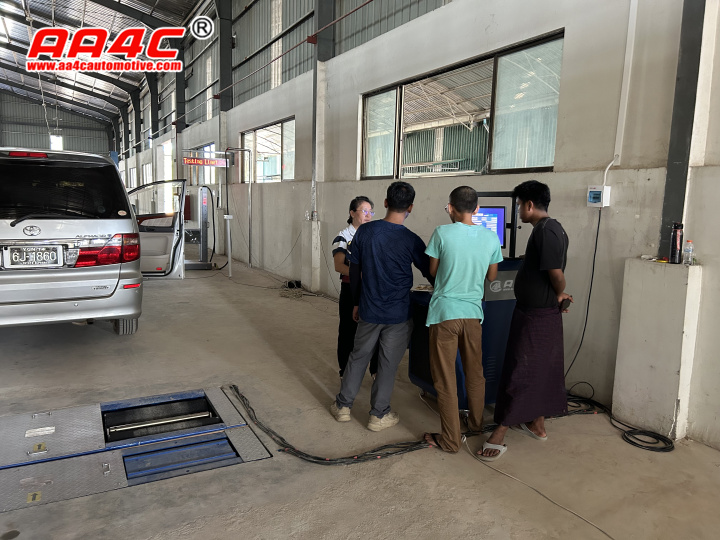AA4C 4 in 1 vehicle test lane vehicle test line in Myanma brake roller tester, side slip, axle load ,suspension Vehicle inspection equipment
we finished installation and debugging on 18-NOV-2024, client is super happy with the performance and service ! Durable quality and reasoanble prices are the basis for all business !



Understanding Vehicle Test Lines: Key Components for Safety and Performance
In the automotive industry, ensuring that vehicles are safe and reliable is paramount. Various testing methods and equipment are employed to evaluate vehicle performance, including test lines that focus on specific aspects such as axle load, suspension, roller brake testing, and side slip. This article explores these components and their significance in vehicle testing.
What is a Vehicle Test Line?
A vehicle test line is a dedicated setup used to conduct a series of inspections and evaluations on vehicles. This line typically includes several stations where different tests are performed to assess the vehicle's safety, performance, and compliance with regulations. Each station is designed to evaluate a specific aspect of the vehicle, ensuring that it meets the required standards before it can be deemed roadworthy.
Axle Load Testing
Importance of Axle Load
Axle load testing measures the weight distribution across the vehicle's axles. This is crucial for several reasons:
- **Safety**: An uneven load can lead to handling issues, increased tire wear, and potential accidents.
- **Regulatory Compliance**: Many jurisdictions have laws governing maximum axle loads to prevent road damage and ensure vehicle safety.
- **Performance Optimization**: Proper weight distribution enhances vehicle performance, including acceleration, braking, and cornering stability.
Testing Process
During axle load testing, the vehicle is placed on a set of load cells or scales. Each axle is measured to determine the weight it bears. This data helps identify any imbalances that need to be addressed.
Suspension Testing
Role of Suspension
The suspension system is critical for vehicle stability, comfort, and handling. It absorbs shocks from the road and maintains tire contact, which is essential for safe driving.
Testing Methods
Suspension testing may involve visual inspections, as well as more advanced methods such as:
- **Shock Absorber Testing**: Evaluating the performance of shock absorbers to ensure they are effectively dampening vibrations.
- **Wheel Alignment**: Checking the angles of the wheels relative to the vehicle body to ensure proper alignment, which affects tire wear and handling.
Roller Brake Tester
Functionality
A roller brake tester is a specialized piece of equipment used to evaluate the braking performance of a vehicle. This device simulates road conditions by allowing the vehicle's wheels to roll over a set of rollers while the brakes are applied.
Benefits of Using a Roller Brake Tester
- **Accurate Measurements**: Provides precise data on brake force and balance between the front and rear brakes.
- **Safety Assessments**: Helps identify any braking issues before they lead to safety hazards on the road.
- **Regulatory Compliance**: Ensures that vehicles meet legal braking performance standards.
Side Slip Testing
What is Side Slip?
Side slip refers to the lateral movement of a vehicle while it is in motion. Excessive side slip can indicate problems with the alignment or suspension, which can compromise vehicle control and safety.
Testing Process
Side slip testing is performed using specialized equipment that measures the lateral movement of the vehicle as it is driven forward. This test helps identify:
- **Alignment Issues**: Detects if the wheels are aligned correctly.
- **Suspension Problems**: Identifies any deficiencies in the suspension system that may contribute to instability.
Conclusion
Vehicle test lines play a crucial role in ensuring the safety and performance of vehicles on the road. By focusing on key components such as axle load, suspension, roller brake testing, and side slip, automotive professionals can identify potential issues before they become serious problems. Regular testing not only helps comply with regulations but also enhances the overall driving experience, leading to safer roads for everyone.

